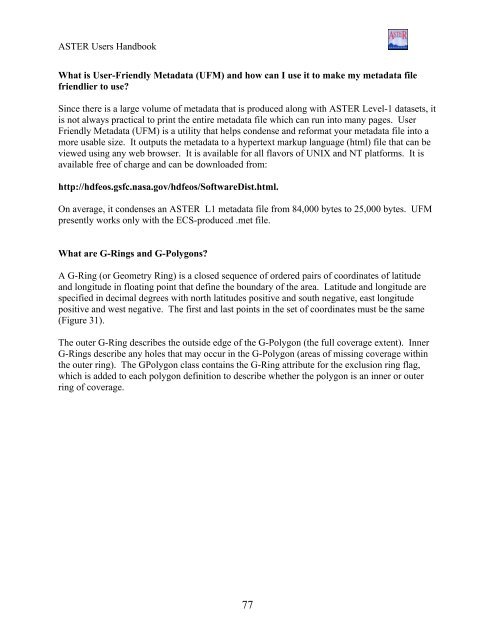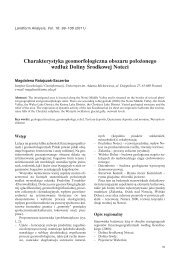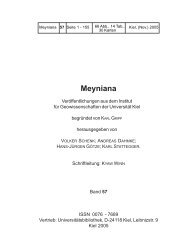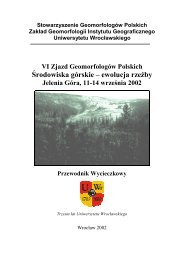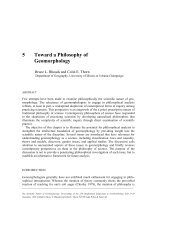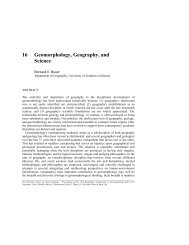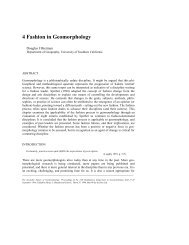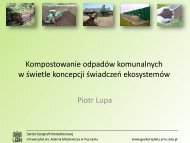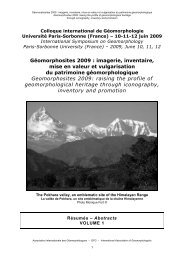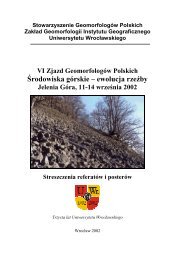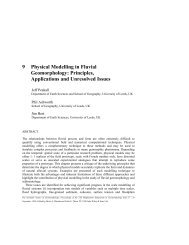ASTER User's Guide - Aster - NASA
ASTER User's Guide - Aster - NASA
ASTER User's Guide - Aster - NASA
You also want an ePaper? Increase the reach of your titles
YUMPU automatically turns print PDFs into web optimized ePapers that Google loves.
<strong>ASTER</strong> Users Handbook<br />
What is User-Friendly Metadata (UFM) and how can I use it to make my metadata file<br />
friendlier to use?<br />
Since there is a large volume of metadata that is produced along with <strong>ASTER</strong> Level-1 datasets, it<br />
is not always practical to print the entire metadata file which can run into many pages. User<br />
Friendly Metadata (UFM) is a utility that helps condense and reformat your metadata file into a<br />
more usable size. It outputs the metadata to a hypertext markup language (html) file that can be<br />
viewed using any web browser. It is available for all flavors of UNIX and NT platforms. It is<br />
available free of charge and can be downloaded from:<br />
http://hdfeos.gsfc.nasa.gov/hdfeos/SoftwareDist.html.<br />
On average, it condenses an <strong>ASTER</strong> L1 metadata file from 84,000 bytes to 25,000 bytes. UFM<br />
presently works only with the ECS-produced .met file.<br />
What are G-Rings and G-Polygons?<br />
A G-Ring (or Geometry Ring) is a closed sequence of ordered pairs of coordinates of latitude<br />
and longitude in floating point that define the boundary of the area. Latitude and longitude are<br />
specified in decimal degrees with north latitudes positive and south negative, east longitude<br />
positive and west negative. The first and last points in the set of coordinates must be the same<br />
(Figure 31).<br />
The outer G-Ring describes the outside edge of the G-Polygon (the full coverage extent). Inner<br />
G-Rings describe any holes that may occur in the G-Polygon (areas of missing coverage within<br />
the outer ring). The GPolygon class contains the G-Ring attribute for the exclusion ring flag,<br />
which is added to each polygon definition to describe whether the polygon is an inner or outer<br />
ring of coverage.<br />
77


